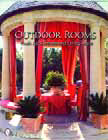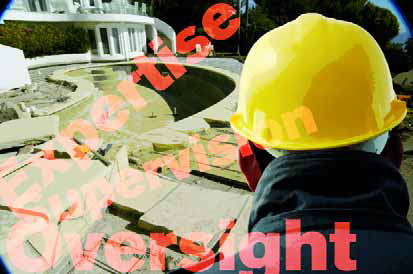ARTICLES
Advance Search
Aquatic Health
Aquatic Health, Fitness & Safety
Around the Internet
Aquatic Culture
Aquatic Technology
Artful Endeavors
Celebrity Corner
Life Aquatic
Must-See Watershapes
People with Cameras
Watershapes in the Headlines
Art/Architectural History
Book & Media Reviews
Commentaries, Interviews & Profiles
Concrete Science
Environment
Fountains
Geotechnical
Join the Dialogue
Landscape, Plants, Hardscape & Decks
Lighter Side
Ripples
Test Your Knowledge
The Aquatic Quiz
Other Waterfeatures (from birdbaths to lakes)
Outdoor Living, Fire Features, Amenities & Lighting
Plants
Ponds, Streams & Waterfalls
Pools & Spas
Professional Watershaping
Structures (Editor's Notes)
Travelogues & History
Water Chemistry
WaterShapes TV
WaterShapes World Blog
Web Links
Around the Internet
Aquatic Culture
Aquatic Technology
Artful Endeavors
Celebrity Corner
Life Aquatic
Must-See Watershapes
People with Cameras
Watershapes in the Headlines
My love of nature started with a rock collection I had as a child: My fascination with the simple beauty of those small pieces of stone hit me early in life and never left. Several years later, my outlook was dramatically expanded when a wealthy uncle of mine paid to have a formal Japanese garden built for his home in Boulder, Colo. Ever since, I've had a profound appreciation of archetypal Japanese gardens and the way they celebrate nature through landforms, rocks, plants and water. By the time I was in high school, I had already decided that my career was going to involve working outdoors, and from that time forward, my prime interest was in bringing the techniques and disciplines of Japanese gardens into the greater American landscape both where I grew up in the Pacific Northwest and elsewhere. For 30 years now, I've worked as a landscape artist in that region - for 15 years in Portland and for the last 15 in Eugene, Ore. Although many of my designs are not what you could describe as "Japanese gardens" per se, everything I do is informed and influenced by those traditions. I bear no grudge of any sort against the beauty of gardens in the Western European tradition, but to my mind, there's nothing in landscape design that harmonizes more seamlessly with nature than
It's true for any subject that it's basically impossible to teach and learn about a topic unless there's a shared set of terms that everyone understands and can agree about what they mean. I've thought about that fact a lot in developing a course for university students about watershaping, or what I'm most often calling "water architecture" these days. With watershaping as a subject, that sounds simple enough. After all, we all know the meaning of "swimming pool," "fountain" and "pond." Or do we? I'm not so sure anymore. When I started breaking down our vocabulary for classroom use, I quickly recognized that the meanings of the words we use are anything but clear. Indeed, the more I dug into this seemingly simple phase of curriculum development, the murkier things became.The difficulty I ran into was this: Once I moved past the most rudimentary sets of terms and definitions and looked closely at the language we use to describe what we produce, it became painfully obvious to me that
It's true for any subject that it's basically impossible to teach and learn about a topic unless there's a shared set of terms that everyone understands and can agree about what they mean. I've thought about that fact a lot in developing a course for university students about watershaping, or what I'm most often calling "water architecture" these days. With watershaping as a subject, that sounds simple enough. After all, we all know the meaning of "swimming pool," "fountain" and "pond." Or do we? I'm not so sure anymore. When I started breaking down our vocabulary for classroom use, I quickly recognized that the meanings of the words we use are anything but clear. Indeed, the more I dug into this seemingly simple phase of curriculum development, the murkier things became.The difficulty I ran into was this: Once I moved past the most rudimentary sets of terms and definitions and looked closely at the language we use to describe what we produce, it became painfully obvious to me that
When people ask me how long it takes to create one of my sculptures, I sometimes like to answer, "My whole life." I've always loved art and started collecting it while still in high school, but I never imagined in those formative years that I'd become an artist myself. After all, I have no formal training, and to this day I can't draw - not well, at any rate. My first career was as a computer programmer, my second as a marketing consultant - both distinctly sedentary occupations that led me to seek something physical to do in my spare time. For whatever reason, I decided to try my hand at sculpting stone, crafting a few rough pieces and taking pleasure mostly from the hard work they involved. Right from the start, however, people
When people ask me how long it takes to create one of my sculptures, I sometimes like to answer, "My whole life." I've always loved art and started collecting it while still in high school, but I never imagined in those formative years that I'd become an artist myself. After all, I have no formal training, and to this day I can't draw - not well, at any rate. My first career was as a computer programmer, my second as a marketing consultant - both distinctly sedentary occupations that led me to seek something physical to do in my spare time. For whatever reason, I decided to try my hand at sculpting stone, crafting a few rough pieces and taking pleasure mostly from the hard work they involved. Right from the start, however, people
When people ask me what I do for a living, I like to tell them I'm a Texas-style maverick in the world of watershaping. That's a lighthearted way of characterizing what I do, but it speaks the truth when it comes to describing what I think this industry is really all about. Indeed, I see the best watershaping as being defined by a pioneer spirit and an appetite for innovation - a drive and hunger that convincingly overcome the all-too-common fear of trying new ideas, technologies and approaches. In my 37 years in the business, in fact, I've seen the process of shaping water change radically from what I witnessed when I started out in the 1970s. All those years of change and experience have helped me look at the art of watershaping in new ways: As have many other opened-minded artists in this business, I've
For a long time now, clients and prospects have been asking me about exterior facilities that will enable them to cook, dine and entertain in their backyards. It's been so prevalent, in fact, that I've mentioned the trend in this space on a couple of occasions - noting once or twice my frustration about the lack of books available for me to use in meeting the need. The sheer demand for these features seems to have arrived several steps ahead of publishers' being able to put books on the shelves. In the past year, however, that picture has changed. Just recently, in fact, I picked up four
For a long time now, clients and prospects have been asking me about exterior facilities that will enable them to cook, dine and entertain in their backyards. It's been so prevalent, in fact, that I've mentioned the trend in this space on a couple of occasions - noting once or twice my frustration about the lack of books available for me to use in meeting the need. The sheer demand for these features seems to have arrived several steps ahead of publishers' being able to put books on the shelves. In the past year, however, that picture has changed. Just recently, in fact, I picked up four
In the last several of these "Details," I've covered what happens in my projects before construction begins. Now we're ready to shift gears and look at what happens on site - the place where design and execution meet. Before we look at the way I build things, however, I want to take a hard look at common practices in the field. What I write here may seem harsh, but it's not intended that way: To establish a baseline for doing things in what I would term the right way, I need to point to practices in our industry - particularly the pool/spa sector - that



















Pioneer Pride